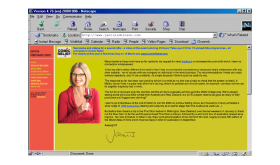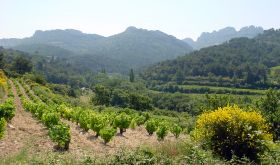Here’s a conundrum. How does a self-professed Scottish socialist, famous for his Sonoma Pinot Noir and Chardonnay, go about pricing his Napa Cabernet?
Napa Cabernets are arguably the world’s most expensive wines. Put together sky-high grape prices, the spiralling cost of land and labour and a well-heeled, hedonistic market on your doorstep and you have a formula for selling prices most other wine producers can only dream of. Few single-vineyard Napa Cabs retail for less than $100 a bottle and some of the most highly regarded names, such as Harlan Estate, can command release prices 15 times that, more than a Bordeaux first growth.
When I posed the question above to Andy Smith, affable winemaker and co-owner of Sonoma-based winery DuMOL, he immediately agreed it was a tough one. ‘I of course want the lowest price possible, which is an unusual position in northern California. We were offered some Chardonnay grapes from Carneros seven years ago, for instance, but we rejected them because the seller said they required a minimum selling price of $75 a bottle. Those are the kind of scenarios you come across in northern California.’
DuMOL is famous for its Sonoma Pinot Noir and Chardonnay, so famous that their prices have risen steadily (see below). The only reason Smith makes a small amount, 200 cases, of quite delicious Cabernet from each of three carefully selected vineyards, two of them in Napa Valley, is because he used to make some Cabernet for Larkmead winery from grapes grown on the Napa Valley floor’s alluvial soils and wanted to try his hand at some other terroirs. He calls it ‘a little project for me to keep my hand in’.
So DuMOL buy some grapes from, inter alia, the Meteor vineyard in the Coombsville subregion east of the city of Napa that is cooled by San Francisco Bay to the south. The pricing problem arose because the vineyard’s owners make some (very delicious) Cabernet of their own, and several other wine producers make a Meteor Vineyard Cabernet, all priced quite robustly, and Smith didn’t feel he could dramatically undercut them. So DuMOL initially priced their version of Meteor Cabernet at $125 a bottle and it now sells for $140, while their Pinots and Chardonnays tend to be well under $100 in California.
‘I struggle with this’, says Smith, ‘because our most expensive wine shouldn’t be Cabernet’. But the Pinot/Chardonnay specialist has also learnt that, ‘on the other hand, Cabernet turns out to be not all that popular with our customers. Only 30% of our private mailing list wants to buy Cabernet.’ (Most top California wines are sold direct to consumers via mailing lists.)
I met Smith in London last month when he was on his way back from one of his frequent returns to his home city Edinburgh via a tasting organised by his UK importers Raeburn Fine Wines in the cellars of The Winemakers Club under Holborn Viaduct in London. It was a trip down memory lane for Smith, who had in 1991 been sent to exactly the same place for training when it an Oddbins shop. (His initial job in wine was working for a branch of this chain of quirky wine shops in Edinburgh.)
Thanks to a recommendation from Zubair Mohamed of Raeburn, he found himself working at Dry River in 1996 and 1997 in Martinborough, New Zealand, an estate famous for its Pinot Noir.
After graduating in oenology from Lincoln, New Zealand’s primary wine university, he worked for both Matua Valley in New Zealand and Yalumba in South Australia, both family companies.
But California called. He worked for Havens, an innovative Napa Valley wine producer that was sold in 2010, and then for Littorai, another famous producer of Sonoma Pinot Noir. It was when he was taken on by winemaker Paul Hobbs to work for his fledgling consultancy business that he met the then owners of DuMOL, who had founded it as a sort of négociant business, buying in grapes, in 1996. In 2001 they offered him a partnership whereby he would be in charge of winemaking. This steadily grew to his becoming viticulturist as well as winemaker as vineyards were acquired, so he has combined both roles for longer than has been fashionable.
The original two owners (whose children’s names inspired the winery’s name) retired in 2015 and sold DuMOL to Smith, a cash partner and an operating partner, which leaves Smith free to concentrate on vines and wines. ‘So no one’s a majority owner', he reports happily, ‘we’re three families’.
Earlier this year DuMOL had an almost incredible stroke of luck. Thanks to a tip-off from an old friend and Napa native Tegan Passalacqua, they have managed to acquire a 9-ha (22-acre) vineyard of 25-year-old Pinot Noir vines just half a mile from their original estate. It is known as the Dr Galante Vineyard (pictured above) to distinguish it from Galante Vineyards in Carmel to the south. Its grapes are under contract elsewhere this year but next year DuMOL will replant about a third of it.
‘The 1990s boom in plantings led to a lot of poor vine material’, according to Smith, citing the scourge of vine trunk diseases that currently affects so many vineyards around the world.
So any minute they will own a total of 32 ha (79 acres) of vines in cool Green Valley, mostly Pinot Noir but including 4 ha of Chardonnay, plus a little bit of both Chenin Blanc and the Spanish red wine grape Mencía. Over 18 years they have transitioned from a négociant business to a domaine, a producer who owns most of the vines supplying its raw material. Smith claims that from 2023 all of their Pinot Noir will come from vineyards they either own or lease.
Their original estate vineyards constitute four contiguous blocks at 100–250 m of elevation. The top two were planted in 2004, the third, source of their Estate Chardonnay, in 2005, and the bottom one in 2016. Leased Pinot Noir vineyards are not far away and could be labelled with the fashionable, if far-too-extensive, Sonoma Coast appellation but Smith sticks to the Russian River Valley appellation (within which Green Valley sits). ‘We’ve always been known as a Russian River Valley producer’, says Smith, ‘even though we’ve moved west [towards the ocean] a bit recently’, adding sternly, ‘nowadays people follow the producer not the appellation.’
I asked Smith whether he was using his time in the UK to taste non-American wines but it sounds as though he keeps up with his international counterparts pretty well, although he said ruefully that he can't afford burgundy any more. He was keen to point out, however that he makes a point of tasting Leeuwin Estate’s top Australian Chardonnay every year and had tasted both Kumeu River’s exemplary NZ Chardonnay and Danbury Ridge English Pinot Noir recently – both wines that deserve attention from any ambitious Pinot and Chardonnay producer, wherever in the world they are.
Recommended Russian River Valley wines
The list is limited to favoured examples available in the UK. Many more are available in the US.
Chardonnay
Hartford Family, Hartford Court Chardonnay 2018 14.5%
£31.88 Wine Direct (Sussex)
Ramey Chardonnay 2019 13.5%
£49.50 Old Bridge, £54 Berry Bros & Rudd, £55 WoodWinters
DuMOL, Highland Divide Chardonnay 2020 14.1%
£56.75 in bond Raeburn Fine Wines
Pinot Noir
Merry Edwards Pinot Noir 2018 14.5%
£63 Vinum
DuMOL, Highland Divide Pinot Noir 2020 13.5%
£71 in bond Raeburn Fine Wines
Williams Selyem Pinot Noir 2020 14.1%
£104.95 AG Wines, £107.65 Vinum
DuMOL, Estate Vineyard Pinot Noir 2020 14.1%
£99.50 in bond Raeburn Fine Wines
For tasting notes and scores, see our tasting notes database. For some international stockists, see Wine-Searcher.com.
















